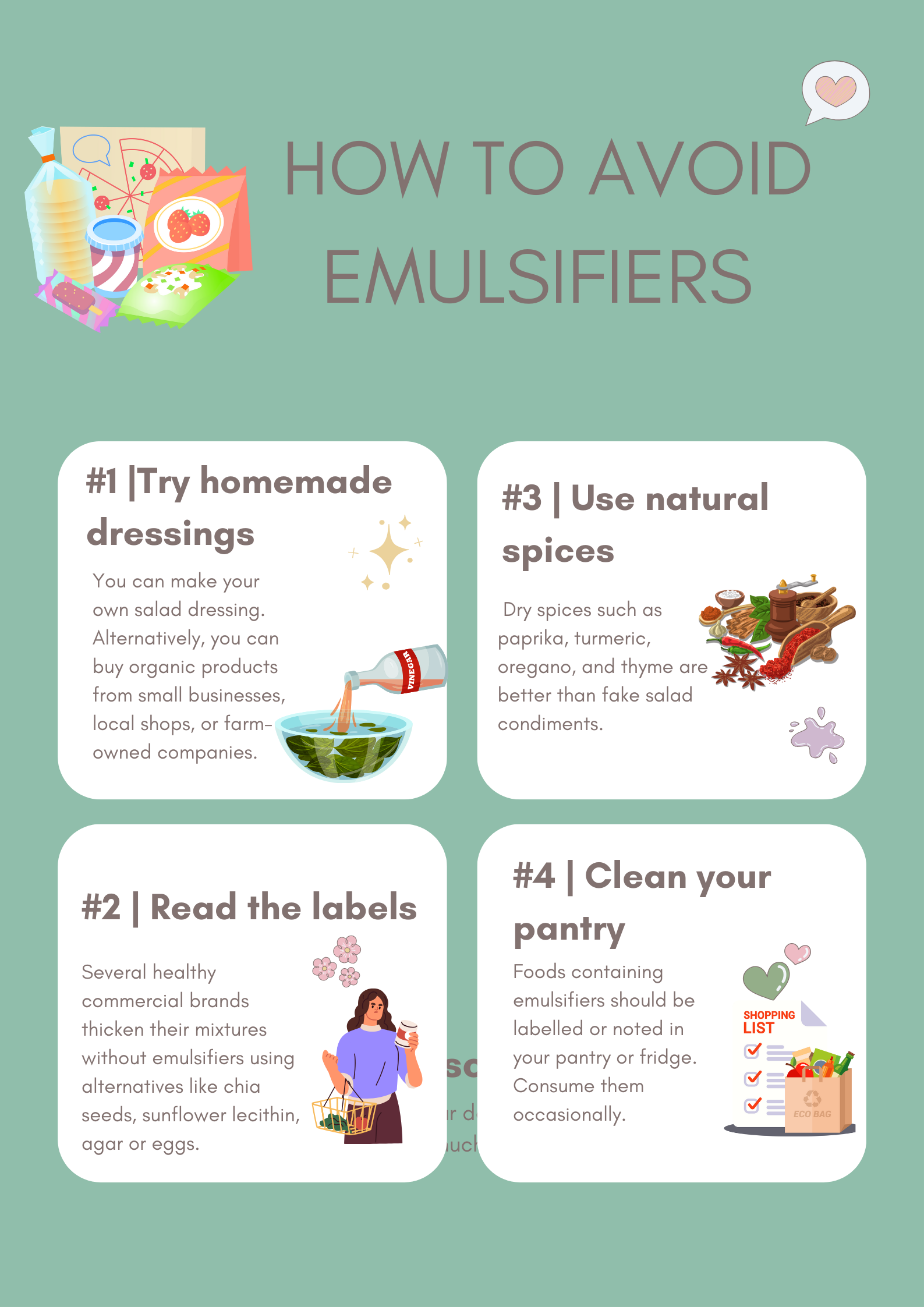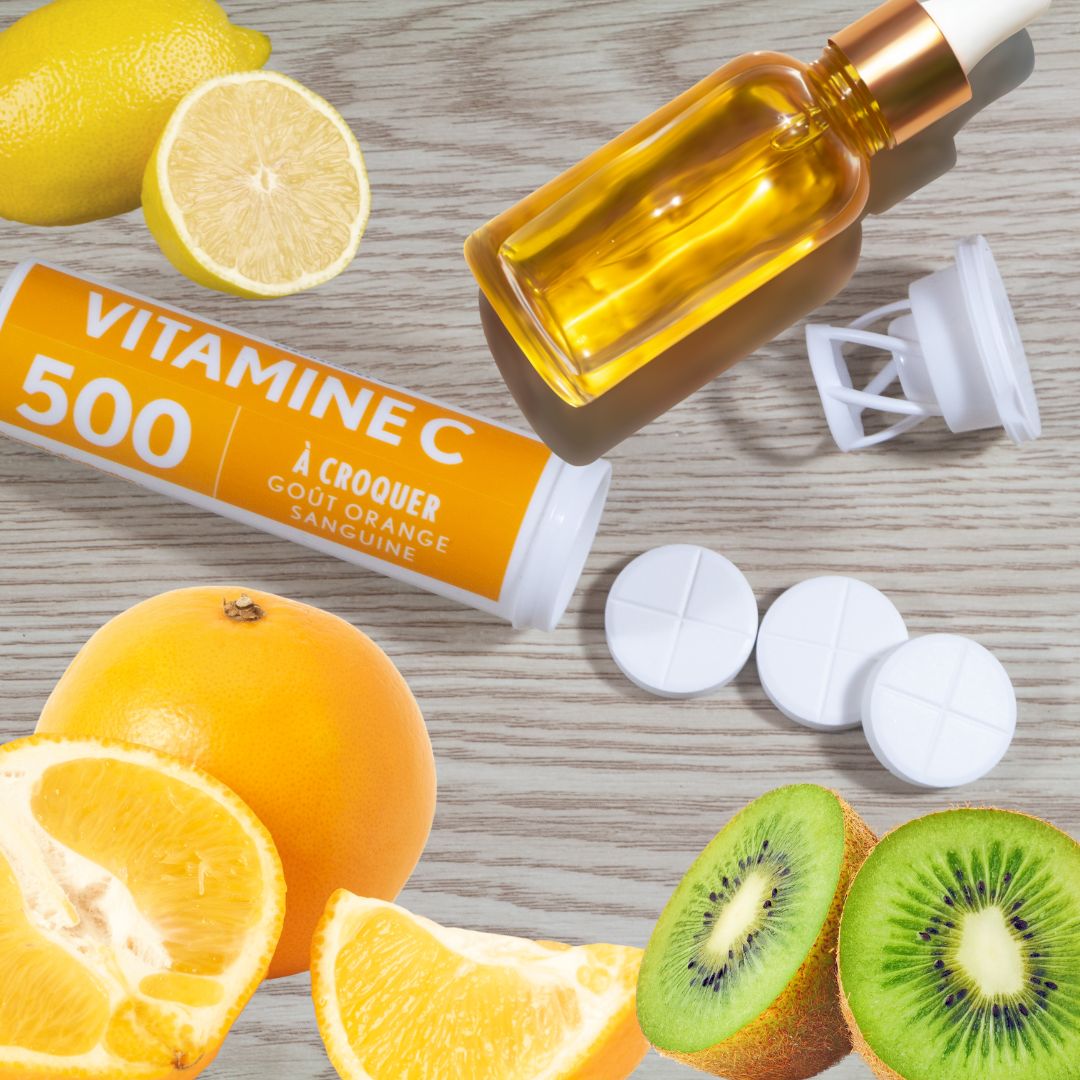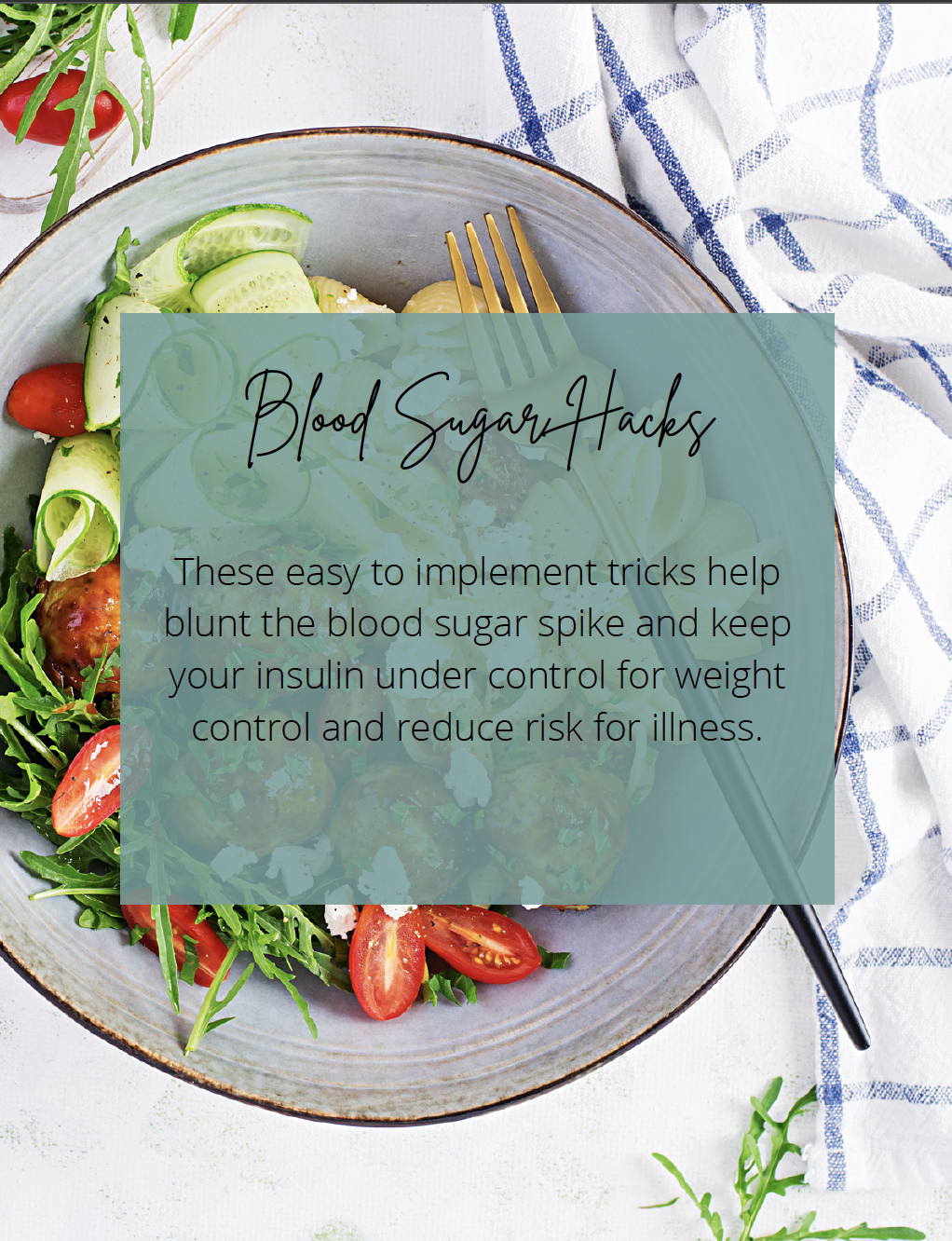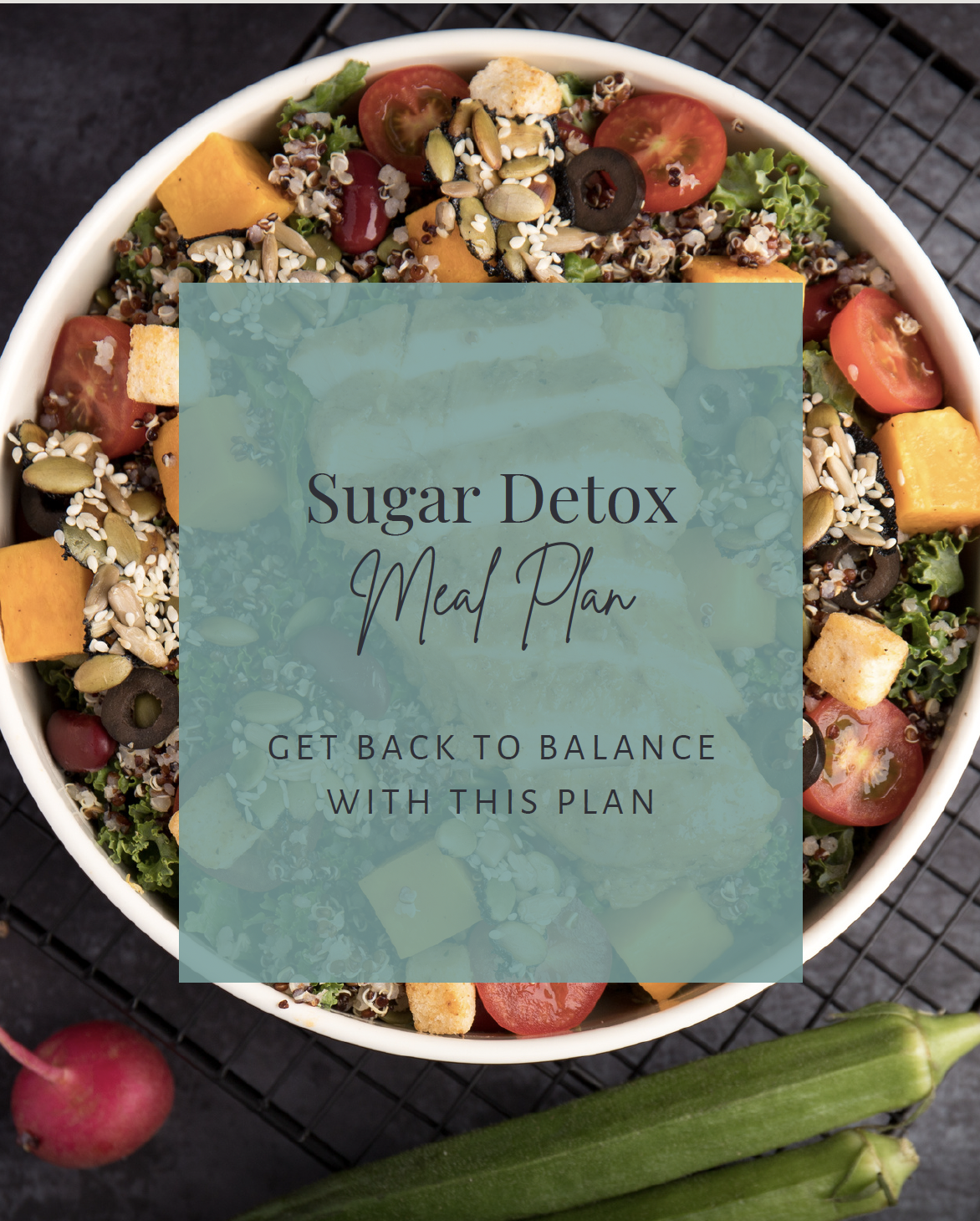No products added!
Two-thirds of Americans experience recurrent digestive symptoms like gas, bloating, and abdominal pain. Due to its stigma, gluten is often tested for, but the results are typically negative. Many patients embark on gluten-free diets because they are seeking relief and are dissatisfied with their test findings, even though gluten may not be the only cause of their symptoms. Symptoms may worsen with even the slightest reintroduction of gluten. Sounds familiar? Although gluten, dairy, and other food sensitivities and allergies may be the issue in many cases, the biggest problem is the added ingredients that plague our food industry. One of those ingredients is emulsifiers.
What are emulsifiers exactly?
Eating nutrient-dense foods that keep your beneficial bacteria in shape and balance is essential for maintaining healthy gut flora and overall health. A balanced diet includes fresh foods, fermented foods, high-quality proteins, and healthy fats. However, unhealthy ingredients added to convenience and processed foods can be detrimental to our good bacteria; therefore, they can destroy our gut flora. The purpose of emulsifiers is to prevent oil and water-soluble ingredients from being separated in foods. Plus, they help with texture, shelf life, consistency and stabilization of mixtures. You can also find them in many cosmetics, lotions, and medications. While they may look unharmful, many studies have concluded that they may cause various diseases related to the gut and the metabolism.
How bad could they be?
There are three types of emulsifiers:
- Natural, which occurs in many foods such as eggs; yes, as you can imagine, it is safe to consume (especially if it is free-run and organic)
- It would be best if you avoided or only consumed sparingly emulsifiers that come in a semi-synthetic and synthetic form. Semi-synthetic emulsifiers come from glycerol and natural fatty acids extracted from animal or plant sources, and Synthetic emulsifiers are chemical substances created in a laboratory.
Research has shown that emulsifiers can reduce the diversity of the gut microbiome, which raises the risk of obesity and chronic disorders like inflammatory bowel disease. The consumption of synthetic emulsifiers, such as carboxymethyl cellulose (CMC) and polysorbate 80 (P80), may raise the risk of metabolic syndromes and obesity, such as type 2 diabetes, cardiovascular disease, and liver disease. A study using fake guts demonstrated that emulsifiers can cause intestinal inflammation by increasing the pro-inflammatory response, increasing the likelihood of inflammatory bowel illnesses like Crohn’s disease and ulcerative colitis.
The non-gluten culprit
Many people are turning to wheat and gluten-free diets, which makes sense as these can be inflammatory. For instance, wheat and wheat products contain amylase-trypsin inhibitors (ATIs), which trigger gut immune responses and can cause inflammation in various tissues, including the brain. In defence of gluten, poor gut health and modern farming, GMOs, and pesticides have likely contributed to an increase in adverse reactions to gluten. People tolerate gluten well in countries with no emulsifiers or other processed ingredients added to foods. The emulsifier added to recently industrially produced foods, such as bread and other commercially produced baked items, may be the problem. Almost every packed and prepared store-bought product contains emulsifiers, such as almond milk, vinaigrette, and cottage cheese. Learning to read labels is the best way to avoid or lessen emulsifiers in your diet. One trick with reading labels is to avoid any food item containing ingredients you can’t pronounce at all costs.
Foods that may contain emulsifiers
- Various nut milks (such as coconut milk, almond milk and macadamia nut milk)
- frozen dairy and dairy-free desert
- daily meat
- salad dressing
- condiments
- flavoured milk
- cottage cheese
- heavy cream, and so on
You may find the following list handy when reading labels:
- Carboxymethyl cellulose (CMC)
- Polysorbate 80 (P80)
- Polysorbate 60
- Ammonium phosphatides
- Propylene glycol
- Carrageenan
- Polyglycerols
- Xanthan gum and the other “gums.”
- Soy Lecithin (maybe from genetically modified soy, which would be hazardous for your digestive system.)
While you cannot avoid emulsifiers altogether, you can lessen them by checking your pantry and fridge, making notes, or labelling the foods with emulsifiers. You can eliminate them slowly by consuming them occasionally.
It is possible to remove emulsifiers from your pantry.
You can make your own salad dressings and nut milk. But if you are busy, you can grab organic products from local shops, small companies or farm-owned companies. Also, reading labels can save you from gut problems. Many commercial healthy brands prefer to use chia seeds, sunflower lecithin or agar (if you want a non-animal derived product such as eggs) to thicken and mix their mixture without emulsifiers. So look for those. The only downside is that making your own dressings or nut milk requires extra minutes that most don’t have. Some ingredients might not be available in some areas, plus you cannot store them for a long time. But on the other hand, they are better for you and will probably cost less.
Bottom line
You can use dry spices like paprika, turmeric, oregano, and thyme on my foods, so there is no need to add fake salad condiments. As for the salad dressings, you make your own, freeze a portion, and leave some out in the fridge.
You can make a salad dressing easily by mixing two tablespoons of olive oil with one tablespoon of lemon juice (or apple cider vinegar), one teaspoon of dried parsley, sea salt and black pepper to taste. Add half an orange for more citrus and sweet and sour flavour.
Summary

Final thought
Consume conventional frozen desserts only occasionally, even if they are organic. Make your dessert in the summer using Greek yogurt (preferably organic) or coconut milk and vanilla protein powder; pour in some raw honey, add two to three pieces of blueberry or any other fruit of preference, and pour it into a popsicle mould. There you got it: a yummy ice cream! It takes less than minutes to make, but it does require some time to freeze, but it’s worth it.
Word of caution.
This website provides information solely for educational purposes and should not substitute medical diagnosis or treatment.






